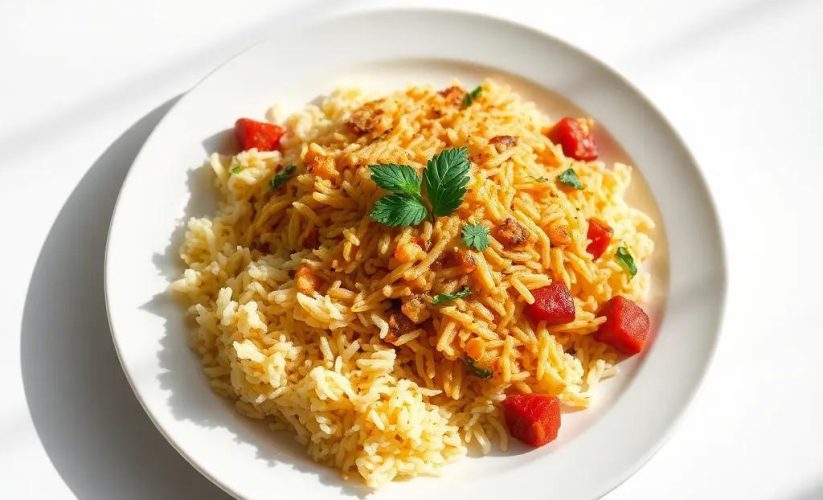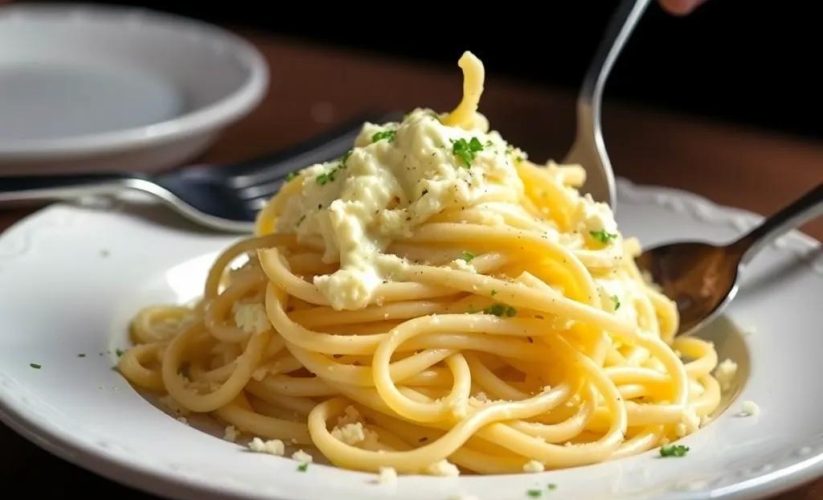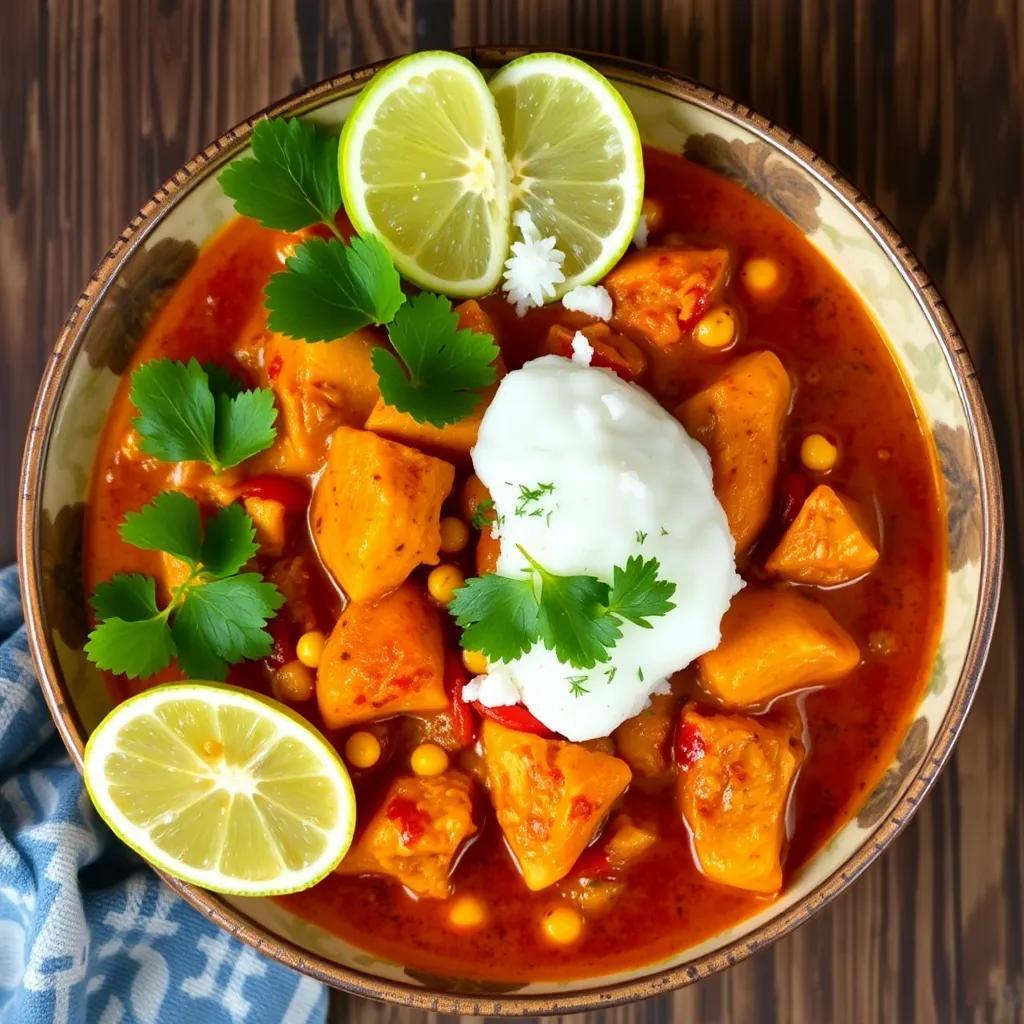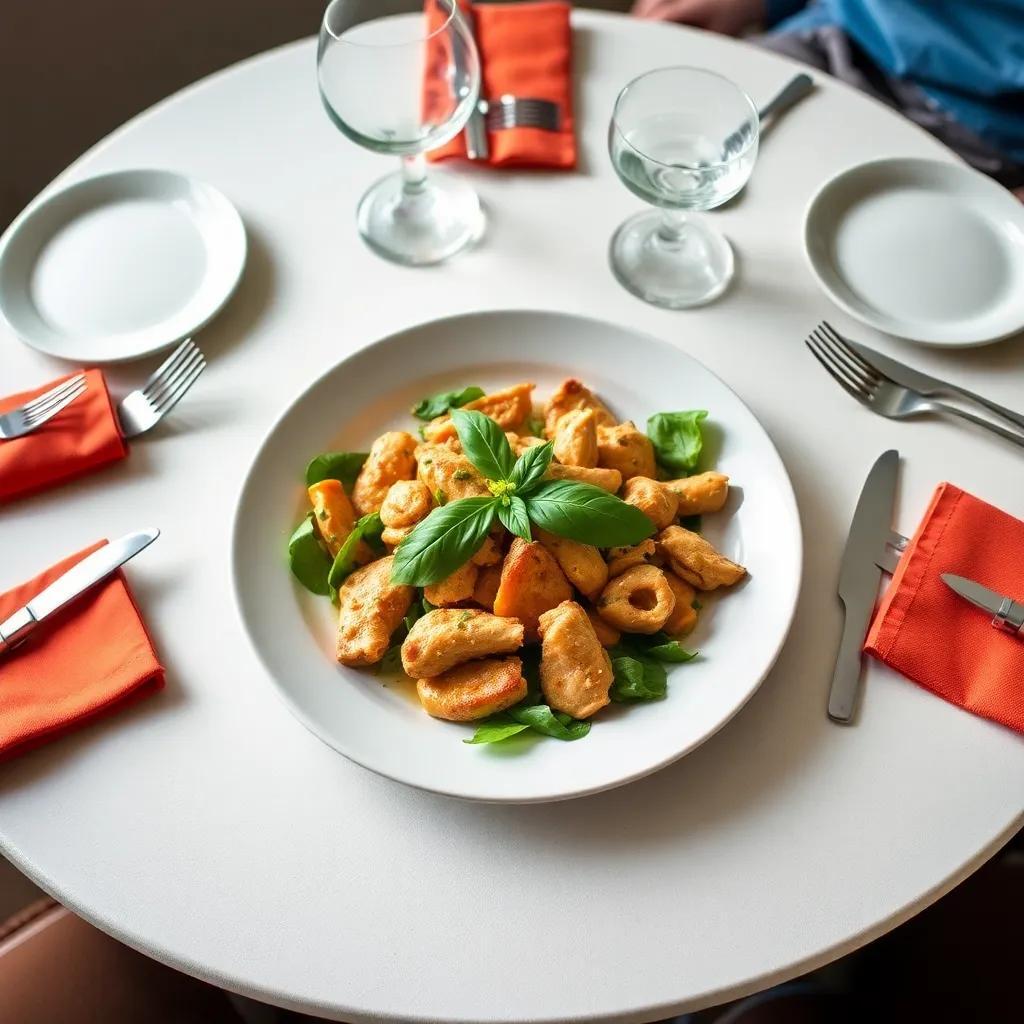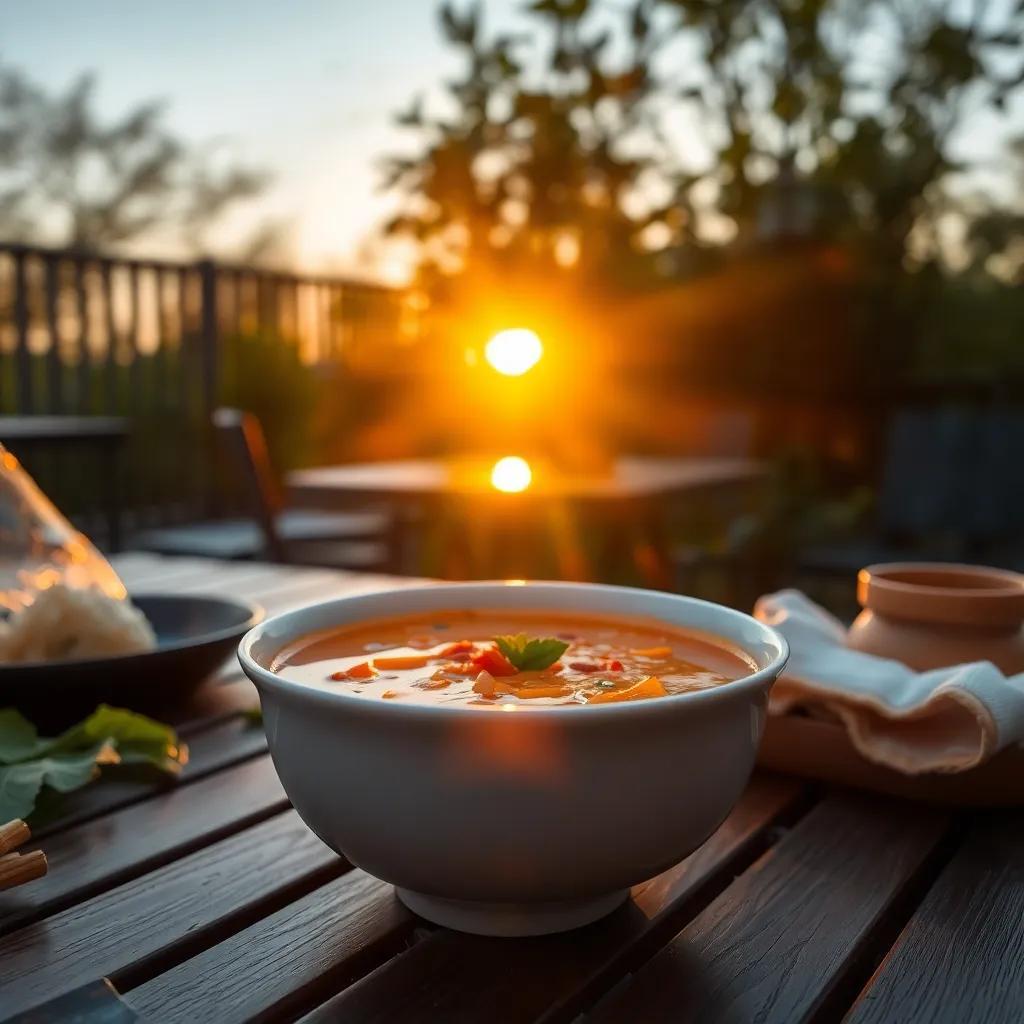Master Authentic Pad Thai: Easy, Flavor-Packed Recipe to Try Today
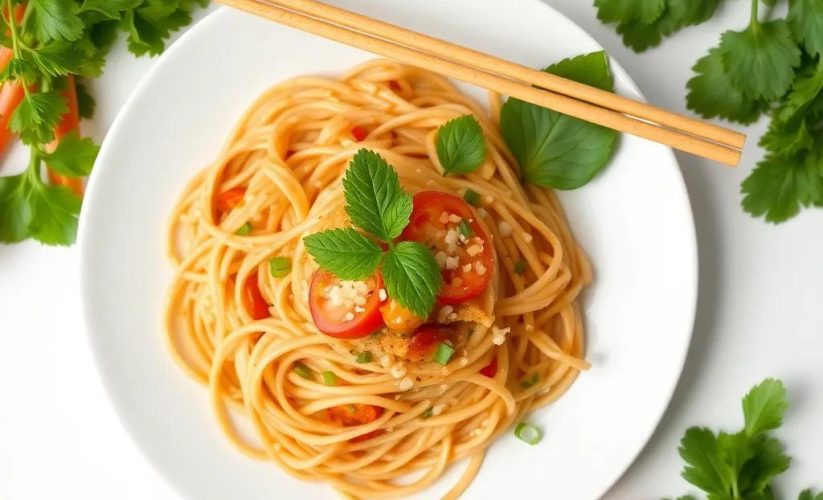
Master Authentic Pad Thai: Easy, Flavor-Packed Recipe to Try Today
🌍 Cuisine: Thai
⚙️ Difficulty: Easy
Ingredients
Nutrition Facts
450
Instructions
- Soak the dried rice noodles in warm water for 30 minutes or until softened. Drain and set aside.
- In a small bowl, combine tamarind paste, fish sauce, and palm sugar. Stir until sugar dissolves and set the sauce aside.
- Heat 2 tablespoons of vegetable oil in a large wok or skillet over medium-high heat.
- Add minced garlic and sauté for about 30 seconds until fragrant.
- Add diced tofu and shrimp to the wok; cook until shrimp turns pink and tofu begins to crisp, about 3–4 minutes.
- Push the shrimp and tofu to one side. Crack the eggs into the empty side and scramble gently until cooked through.
- Add drained noodles to the wok, pour the tamarind-fish sauce mixture over, and toss everything together to combine well. Cook for 2–3 minutes until noodles are coated and heated through.
- Add bean sprouts and sliced green onions, tossing briefly to combine and soften the vegetables slightly.
- Remove from heat and serve immediately, garnished with crushed peanuts, fresh cilantro, lime wedges, and chili flakes if desired.
- Squeeze fresh lime juice over each serving to enhance flavor.
Serving Suggestions
- Serve with extra lime wedges on the side for added tanginess.
- Pair with a crisp Thai iced tea or chilled lager to complement the flavors.
- Add a side of fresh cucumber slices or a simple green salad for a refreshing balance.
- Sprinkle additional crushed peanuts or fresh herbs such as Thai basil for extra texture.
- Include a small bowl of sweet chili sauce or sriracha for guests who like it spicier.
- For a vegetarian version, omit shrimp and use extra tofu and tamari sauce instead of fish sauce.
- Serve on banana leaves for an authentic presentation during special occasions.
Table of Contents
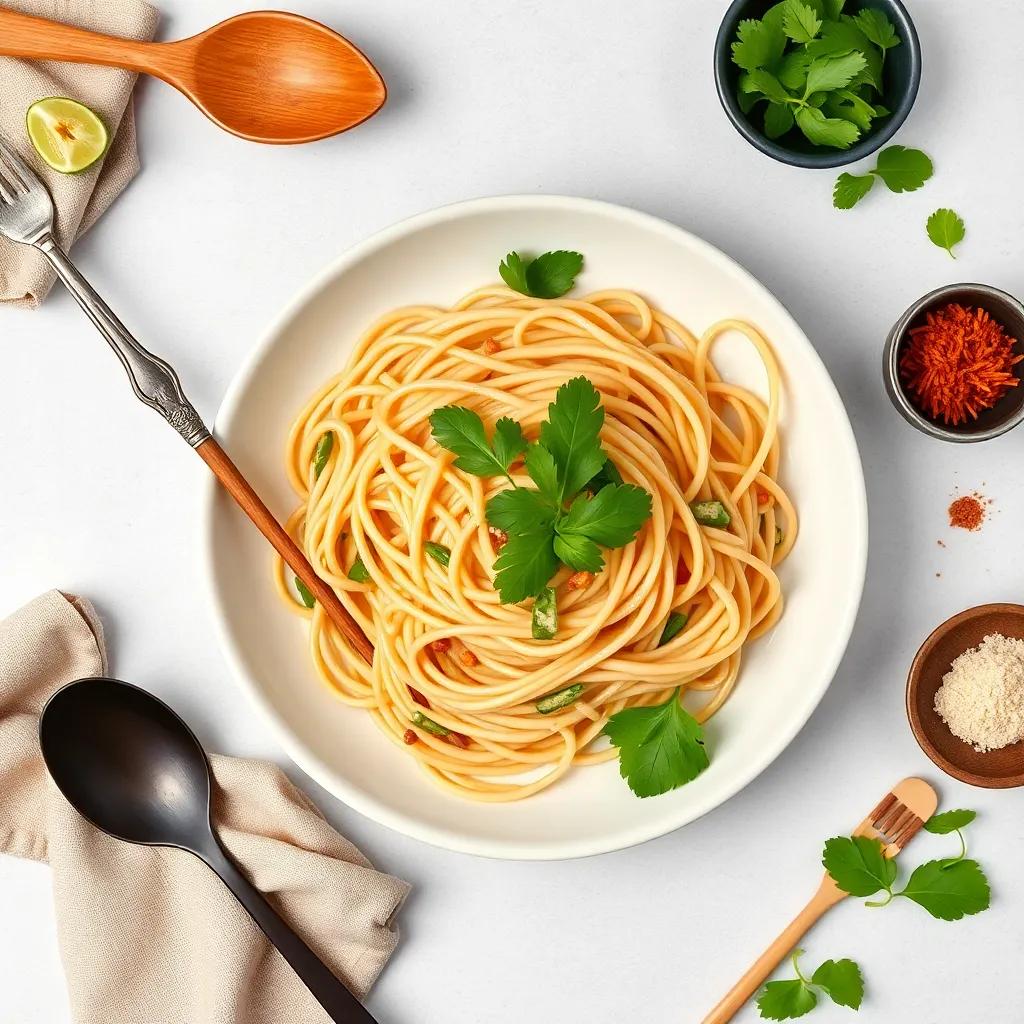
Intro
There’s something truly magical about making Pad Thai at home — it’s a dish that effortlessly balances sweet, tangy, salty, and savory notes, all wrapped up in tender, chewy noodles and vibrant, fresh ingredients. This recipe invites you to master an authentic version that’s as approachable as it is packed with flavor, whether you’re a kitchen novice or a seasoned cook craving a taste of Thailand.
Perfect for weeknight dinners or impressing guests, Pad Thai is a crowd-pleaser that comes together in a flash, offering a satisfying blend of textures and tastes. Its quick cook time means you can whip up a restaurant-quality meal without long hours or complicated techniques. Plus, it lends itself beautifully to customization, making it a flexible centerpiece for any table — from casual family meals to festive occasions.
Beyond just being delicious, making Pad Thai yourself brings a wonderful sense of accomplishment, connecting you with a rich culinary tradition while giving you room to put your own spin on this classic favorite. Whether you serve it piping hot with a squeeze of fresh lime or share it alongside crisp vegetables or refreshing drinks, this recipe promises a delightful dining experience that’s both authentic and easy to enjoy.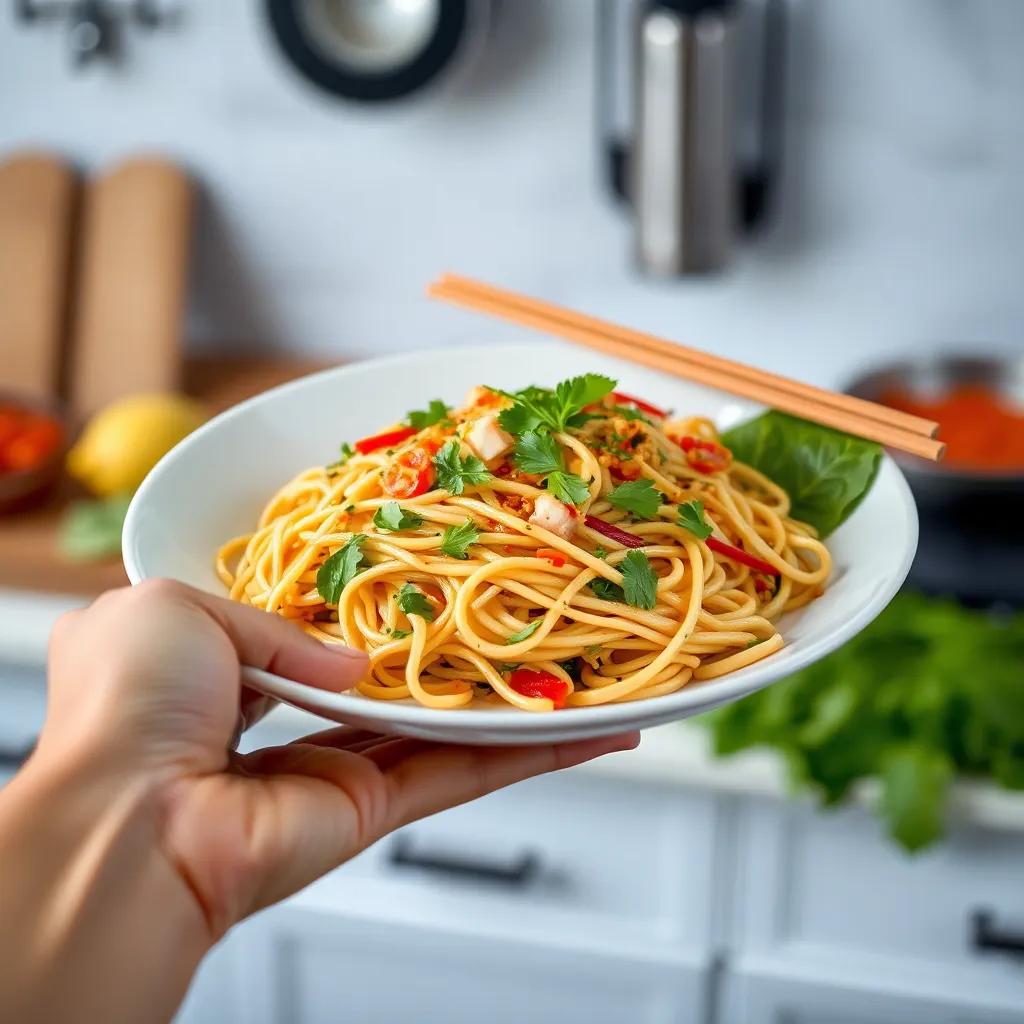
Ingredient Notes
When it comes to crafting an authentic and memorable Pad Thai, a few key ingredients truly elevate the dish beyond everyday stir-fry fare. Understanding these specialty elements will help you capture the iconic balance of flavors and textures that define this Thai classic.
Tamarind Paste
Tamarind paste is the heart of Pad Thai’s distinct tangy-sour note. Made from the pulp of tamarind pods, this thick, dark concentrate adds brightness and complexity that fresh lime alone can’t replicate. When shopping, look for tamarind paste in Asian grocery stores or specialty markets, often sold in small tubs or as a block that you soften yourself. If tamarind isn’t available, a blend of lime juice and a touch of brown sugar can mimic the tart-sweet profile, but the flavor won’t be quite as deep or authentic.
Fish Sauce
Fish sauce brings the quintessential umami punch and saltiness to Pad Thai, creating a savory backbone that ties the dish together. Use a high-quality, clear fish sauce for the cleanest flavor. Famous brands like Red Boat or Squid Sauce are staples in Thai cooking and worth seeking out. For vegetarians or those avoiding seafood, tamari or soy sauce mixed with a bit of seaweed broth can offer a similar savory dimension, though it won’t replicate the true oceanic notes.
Palm Sugar
Palm sugar is the secret to Pad Thai’s gentle sweetness and subtle caramel undertones. Unlike regular granulated sugar, palm sugar has a complex, almost molasses-like richness that balances the tartness of tamarind and the saltiness of fish sauce. It typically comes in blocks or granules and dissolves beautifully in sauces. Brown sugar is an acceptable substitute if you’re in a pinch but expect a slight flavor difference. When using palm sugar, be sure to crumble or grate it finely for easier melting and even sweetness distribution.
Flat Rice Noodles
The signature silky texture of Pad Thai comes from flat rice noodles—often called “sen lek” noodles in Thai cuisine. These noodles are thin and flat, made from rice flour and water, and when prepared correctly, they provide the perfect chewy bite without becoming mushy. When buying dried noodles, ensure they’re labeled “flat rice noodles” and soak them in warm water just until pliable but not fully soft, as they continue cooking in the wok. Fresh noodles can be found at Asian markets and offer a softer, more delicate texture but may require less soaking.
By paying attention to these foundational ingredients and sourcing them mindfully, you set yourself up for a Pad Thai that delivers authentic flavor with every bite. Each element plays a unique role in creating the harmonious blend of sweet, sour, salty, and savory that makes this dish a timeless favorite the world over.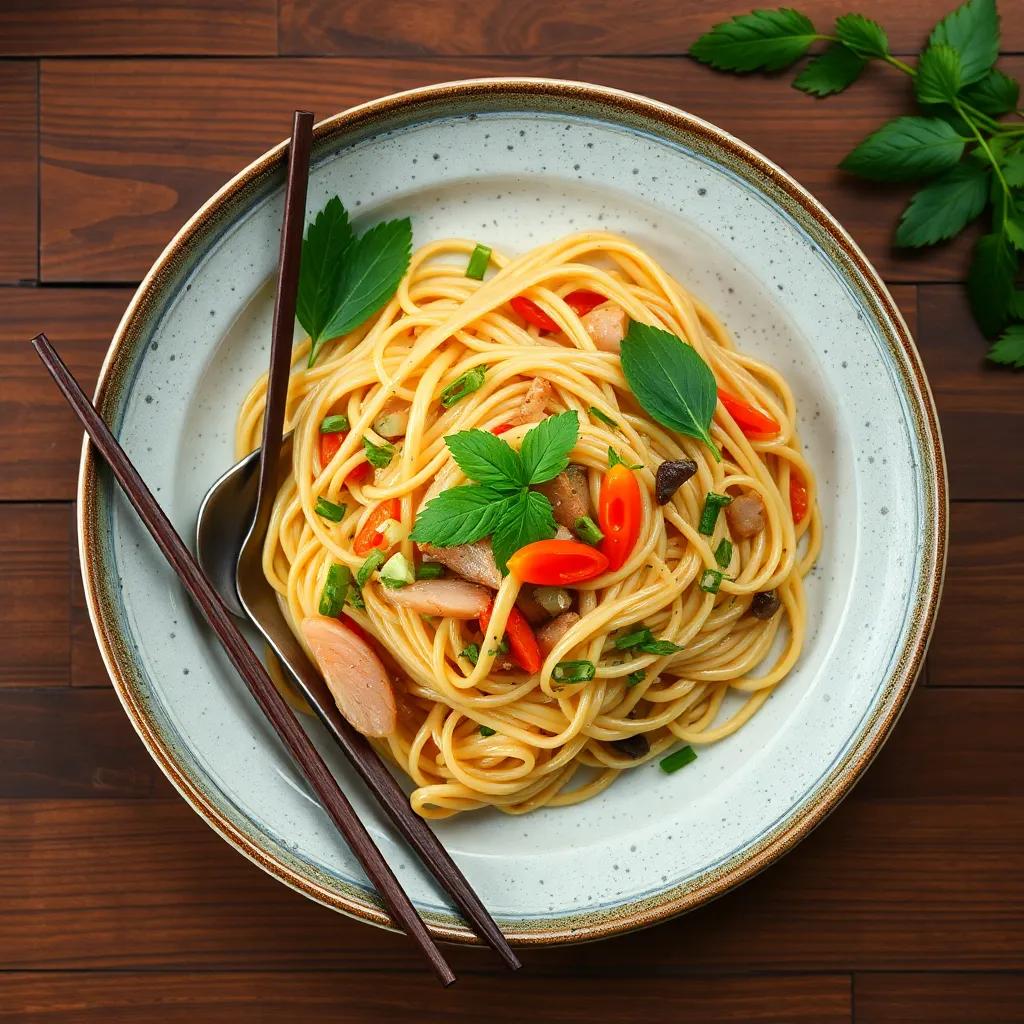
Tips & Variations
To elevate your Pad Thai game, a few insider tips and creative twists can make all the difference, whether you’re after perfect texture, bold flavor, or dietary adaptations that suit your lifestyle.
Pro Tips for Perfect Pad Thai:
- Noodle prep matters: Soaking rice noodles until just pliable is key. Over-soaking will leave them mushy and prone to breaking during stir-frying. Aim for noodles that are softened but still have a slight firmness—they’ll finish cooking quickly in the wok and retain that ideal chew.
- Wok or skillet heat: Use medium-high heat and keep your ingredients moving in the pan. This ‘wok hei’ or “breath of the wok” imparts a subtle smoky char and a lively aroma. Avoid crowding the pan; cook in batches if needed to maintain heat and avoid steaming.
- Layer flavors thoughtfully: Add aromatics like garlic early to bloom their fragrance, but toss in fresh ingredients like bean sprouts and green onions last to keep their crunch and brightness.
Customization Ideas:
- Protein swaps: Feel free to replace shrimp and tofu with chicken, thinly sliced beef, or even crispy pork belly. Vegetarians can double down on tofu or use tempeh for a nuttier bite.
- Vegan adjustments: Omit eggs and fish sauce, and substitute fish sauce with tamari or a mushroom-based soy sauce. To mimic the savory depth of fish sauce, a splash of seaweed broth or miso can add umami complexity.
- Spice control: Incorporate chili flakes to suit your heat preference, or serve spicy condiments on the side for guests to customize. You can also add fresh Thai bird’s eye chilies while cooking for a sharper kick.
- Vegetable boosts: Boost nutrition and bulk by adding sliced bell peppers, shredded carrots, snap peas, or baby corn. Just toss them in alongside the noodles to lightly soften while maintaining crispness.
Ingredient Swaps and Adjustments:
- Noodle alternatives: If rice noodles are hard to find, flat rice vermicelli or even pad see ew-style wide noodles can work in a pinch, although the texture will vary. For gluten-free needs, rice noodles remain ideal—as they’re naturally gluten-free—but always check packaging to avoid contamination.
- Sweetener tweaks: If palm sugar isn’t on hand, a combination of brown sugar and a touch of maple syrup can add a nuanced sweetness. Avoid using white sugar alone, which is too sharp and lacks depth.
- Sauce substitutions: When working around allergies or dietary restrictions, liquid aminos or coconut aminos make excellent soy-free, gluten-free alternatives to fish sauce or soy sauce, though they will shift the flavor profile slightly.
By experimenting with these ideas, you can tailor your Pad Thai to any occasion or palate—whether aiming for an authentic taste, a health-conscious meal, or a unique fusion that reflects your own culinary flair. The beauty of this dish lies in its vibrant balance and versatility, so don’t be afraid to make it your own.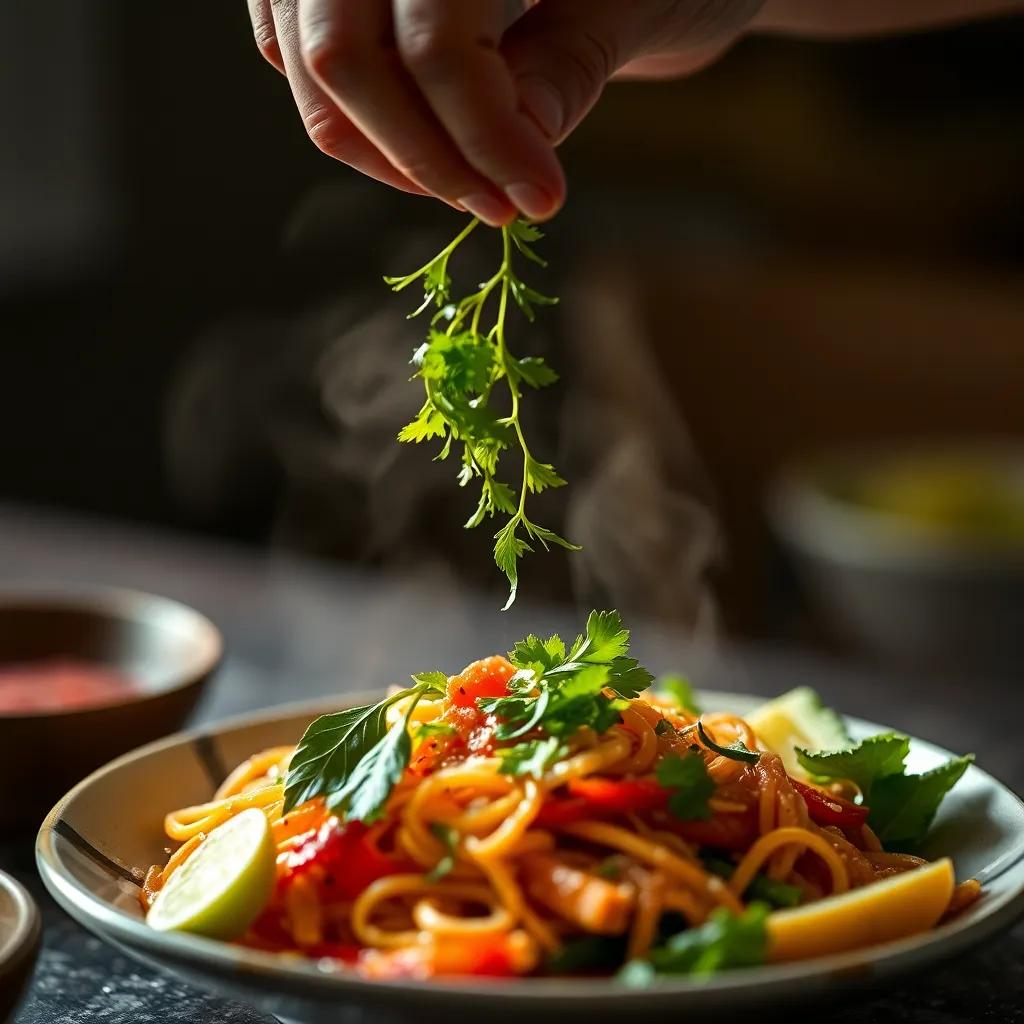
Leftovers & Storage
Leftover Pad Thai is a delicious treat waiting for you in the fridge, but to keep its textures and flavors at their best, proper storage is key. Because this dish combines delicate rice noodles, fresh vegetables, and savory proteins like shrimp and tofu, handling leftovers thoughtfully will ensure each bite stays satisfying and safe to eat.
For short-term storage, transfer any leftover Pad Thai into an airtight container as soon as it has cooled to room temperature. Avoid leaving it out for more than two hours to prevent bacterial growth. Stored this way, the dish will stay fresh and flavorful in the refrigerator for up to 2 days. If you plan to enjoy leftovers within this time frame, gently reheat in a skillet over medium heat with a splash of water or oil to revive the noodles’ tenderness and prevent drying out. Microwaving works too, but stir halfway through to warm evenly.
If you’re looking to meal prep or save Pad Thai for longer, freezing is an option, though with some caveats. Because the noodles can become softer and the fresh ingredients lose some crunch after thawing, it’s best to freeze Pad Thai without bean sprouts or fresh garnishes like lime wedges and cilantro, adding those fresh when serving. Portion the dish into freezer-safe containers or heavy-duty resealable bags, removing as much air as possible to prevent freezer burn. Properly frozen, Pad Thai can last up to 1 month. Thaw overnight in the refrigerator and reheat on the stove for best results.
To pack Pad Thai for lunches or on-the-go meals, use leak-proof containers and keep any lime wedges, crushed peanuts, and chili flakes separate until just before eating. This helps maintain the crunch and vibrant flavors that make Pad Thai so enjoyable.
In summary, to keep your authentic Pad Thai tasting fresh after the first meal:
– Store cooled leftovers in airtight containers in the fridge for up to 2 days.
– Reheat gently with moisture to restore texture.
– Freeze in portions for up to 1 month, omitting delicate fresh ingredients before freezing.
– Pack garnishes separately for meal prep or lunch boxes.
By following these simple steps, you’ll savor every last bite of this flavor-packed dish without losing the essence of what makes Pad Thai so delicious.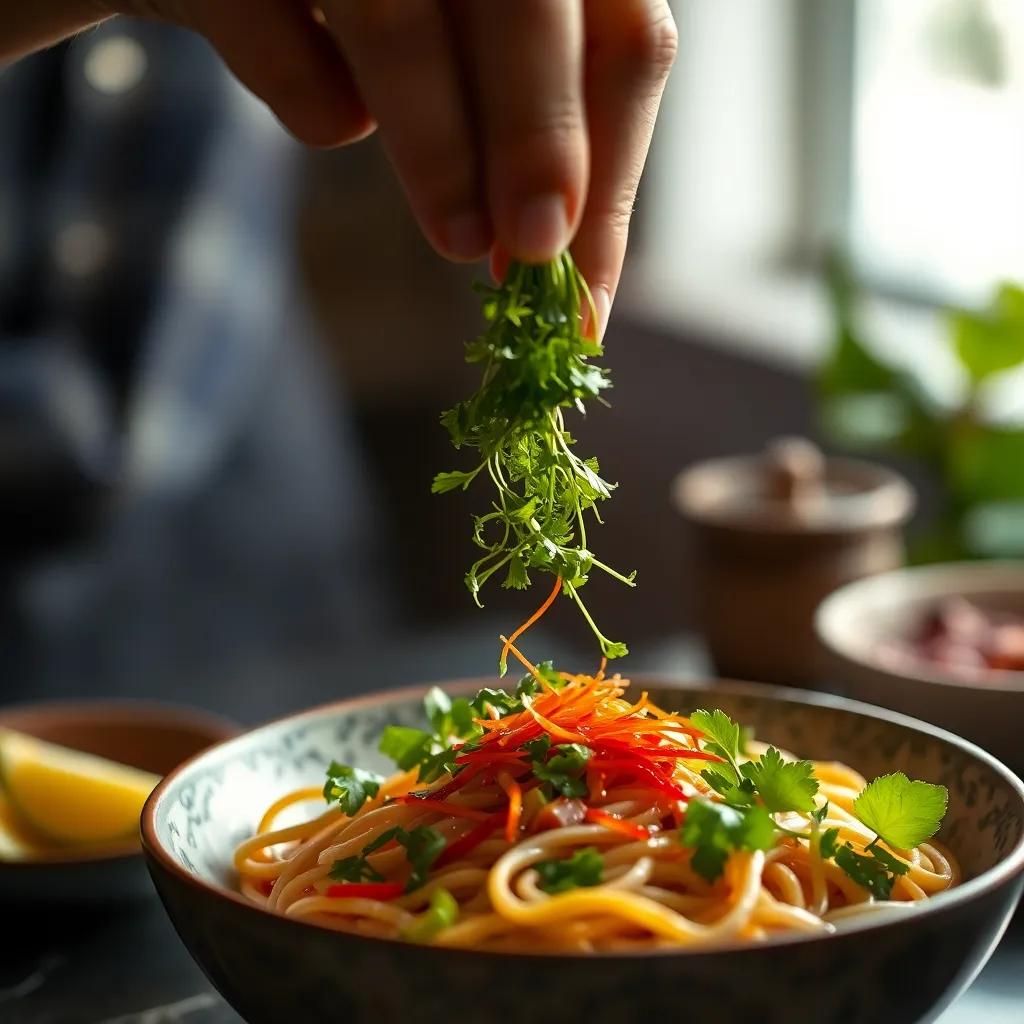
Behind the Recipe
Pad Thai is much more than just a popular street food; it’s a dish steeped in history, culture, and the spirit of Thailand itself. Its origin story reflects a fascinating blend of influences and adaptations that have shaped it into the iconic meal enjoyed worldwide today. Often attributed to the mid-20th century, Pad Thai was initially promoted by the Thai government during World War II as a way to encourage nationalism and reduce rice consumption by incorporating noodles instead. This purposeful push transformed a humble stir-fried noodle dish into a symbol of Thai identity and culinary pride.
At its core, Pad Thai embodies the Thai philosophy of balancing flavors—sweet, sour, salty, and spicy harmonizing in every bite. Each ingredient has its place in this flavor dance, from the tang of tamarind to the richness of peanuts and the umami punch of fish sauce. The recipe you see here is a respectful nod to those time-honored traditions, crafted to capture the essence of street vendors’ quick, lively cooking with easily accessible ingredients and straightforward steps.
On a personal note, many cooks find that Pad Thai is a gateway to exploring Thai cuisine because it’s approachable but endlessly rewarding. The smell of garlic sizzling in oil, the vibrant colors of fresh bean sprouts and herbs, and the final squeeze of lime all spark memories of bustling night markets and family gatherings. Making it at home opens a window to that experience and invites anyone to relish a taste of Thailand’s warmth and hospitality.
Ultimately, this recipe bridges past and present—the authenticity of classic flavors meets the simplicity of home cooking, inviting you to share a dish that is both culturally rich and universally loved. Each plate is a small celebration of a recipe that has traveled far and wide, evolving while staying true to its delicious roots.
FAQ
Can I use tofu instead of chicken or shrimp in this Pad Thai?
What’s the best way to store leftover Pad Thai?
Can I make the sauce ahead of time?
Is it possible to make this dish gluten-free?
How can I adjust the heat level to suit my taste?
What’s the secret to getting the perfect noodle texture?
Can I freeze leftover Pad Thai?
Enjoy Your Meal!
There you have it—a simple, flavor-packed journey into the heart of authentic Pad Thai that’s ready for your kitchen. With its perfect balance of sweet, tangy, and savory, this recipe invites both beginners and seasoned cooks to create a dish that’s as comforting as it is exciting to share.
Give it a try and let the vibrant tastes transport you to the bustling streets of Thailand. When you do, don’t forget to drop a comment, rate the recipe, or share your own creative twist—we’d love to hear how your Pad Thai adventure turns out!

